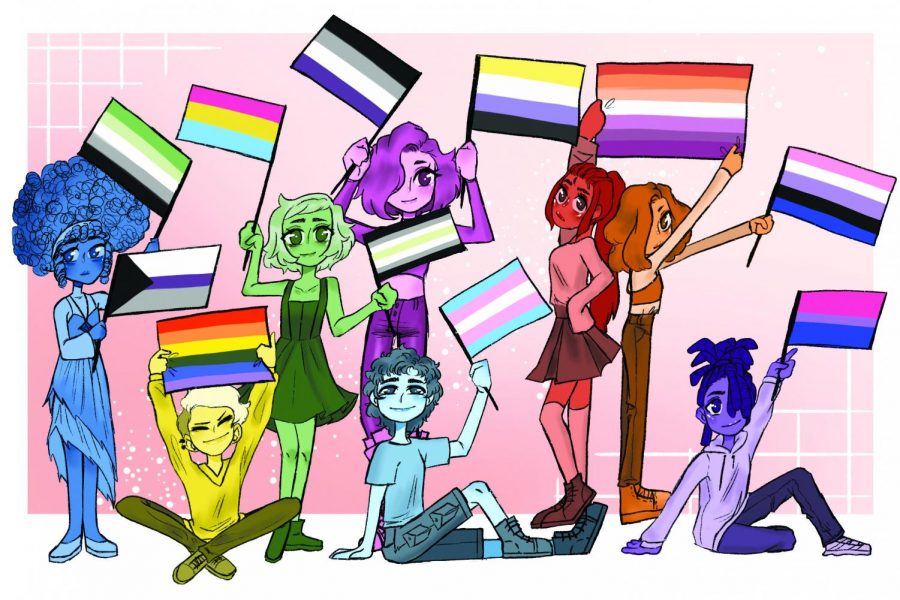Students, staff discuss National Coming Out Day experiences, campus resources
December 14, 2021
Editor’s Note: This article first appeared in the October 11 flipbook.
Nerves coursed through Amanda Garcia’s body as she clicked “share” on her Instagram coming out post during Pride Month in 2021. Immediately, loving messages flooded her comment section.
“When I came out, I felt so much love from the queer community, and I had never felt more supported,” Garcia, a sociology and government sophomore, said. “I understand it’s not going to be that case for (everyone) if they come out, but my advice is to know that there’s a community of support and understanding (people).”
Every year on Oct. 11, members of the LGBTQ+ community celebrate their identities during National Coming Out Day. In celebration of the Second National March on Washington for Gay and Lesbian Rights in 1987, the day creates an open and safe space for members of the community to come out and feel seen.
Freshman year, while her friends shared who they had crushes on, Garcia said she took the opportunity to casually come out as bisexual. She said her UT friends supported her immediately, though she still hesitated to talk about her sexuality in spaces with her old high school friends.
“I’ve pretty much known my sexuality since middle school, but I have barely come out now,” Garcia said. “Everyone has their own timeline, and whether you choose to come out or to never come out, … everything is valid.”
Liz Elsen, director of the Gender and Sexuality Center, said Coming Out Day fosters growing representation in the community. She said allies understand the importance of financial donations, as well as empathy, in helping LGBTQ+ students. Elsen said the GSC crisis fund collects donations that mostly help students who lost financial support from their families after coming out.
“Our students deserve to not feel like they have to come out,” Elsen said. “Maybe one day, they’ll just be able to live and people won’t automatically assume that everyone is cisgender and heterosexual. That’s a dream for a lot of our students. But that’s not the world we’re living in right now, so it’s important to have representation.”
Many other organizations on campus offer a safe space for LGBTQ+ students to freely express their identity every day of the year, not just National Coming Out Day. Thalía Menchaca, vice president of the National Lesbian and Gay Journalists Association, said raising awareness for coming out can inspire others to do the same.
“Some people aren’t comfortable coming out yet, but seeing someone out who is or has come out might be an inspiration for them to come out eventually,” journalism sophomore Menchaca said.
Cultural obstacles and a lack of family support, Menchaca said, can make coming out a difficult process for many young people of color especially. Menchaca said NLGJA strives to provide a community for students who don’t feel comfortable coming out to their friends and families.
“One barrier (for coming out) for myself is that I am Mexican American, and there are a lot of students who identify as Hispanic or Latino (with this barrier),” Menchaca said. “I hope NLGJA can kind of maybe break that (pattern), even just at UT.”
Though National Coming Out Day provides a safe space for those in the LGBTQ+ community, Garcia stressed that people don’t have to come out until they feel ready.
“Coming Out Day creates a good environment where everyone is coming out, and it releases some pressure off of you,” Garcia said. “At the same time, while it might feel comforting to have everybody coming out at once, definitely don’t feel peer pressured if you don’t feel ready.”



